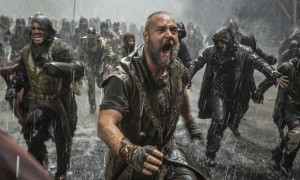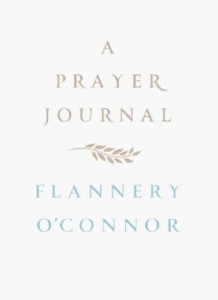THE GOOD THING ABOUT JET-LAG…
…is that it means that you can be wide awake at 4am, answering forty emails and catching up on your blogging. Ordinarily, I waste the hours between 4am and 6am, you know, sleeping. Rats.
Back in L.A. after eight days in Spain and Southern France.
We were also obliged by an overbooked Air France flight to spend an extra day enjoying cold French hospitality in a two-star hotel (read: ridiculously slow Internet access and room keys handed out with sneering haughtiness…what IS it with French people, anyway?!) in a small town just outside of Paris. (The town is Roissy. My companions tell me it was fatally quaint. I opted to sleep that last day, so all I have from Roissy is a bottle of champagne the mayor of the village presented to my friends. I really have no idea what THAT was about…)
Eight days: Madrid, Avila, El Escoriel, Zaragossa (my favorite place! more about it later…), Barbastro, Torrecidad, Barcelona, Montserrat, Andorra, the amazingly picturesque Pyrenees, Pau in France. Too much beautiful art in one week. I got saturated by mid-week, and found myself experiencing the unbelievable shrine at Montserrat the way my five year old nephew acted after six hours at Disneyland. Just kind of stumbling through, overwhelmed and certain that the world holds many more things in it than we can ever dream of or imagine. Way too many impressions to have them all straight yet, but here are a few thoughts that are strongest right now…
Once again, this visit has demonstrated to me that Spanish people are among the loveliest, warmest, most gracious and generous souls God created. I know that Spanish people must work for a living, but judging by the amount of time everybody gave us wherever we went, you would think they just sit around Medieval plazas all day, drinking coffee and waiting to escort clueless Americans anywhere, to do anything, for as long as it takes.
The purpose of our trip was for me to see some of the sights and terrain that will be the backdrop for the screenplay I am writing set during the Spanish Civil War. Special thanks for planning our every day, and finding me a stream of English speaking historians with whom to chat goes to the extraordinary (that would be one of my adjectives, Cristina) Cristina Fernandez Alonzo of Madrid. (I know it will be mortifying to her for me to thank her on the World Wide Web, but Cristina, that is the risk you take when you are busy about being amazingly kind and good…) Cristina, who produces a TV show and runs a charitable foundation for children, is one of those Christians who makes you feel really good about “our side.” If the Gospel produces people like this, it’s got to be real. Muchos gracias, Cristina!
Thanks also to all the people Cristina prevailed on to answer our questions and take us around – Beatrice and Pilar in Madrid, Alvarro in Zaragossa, Fr. Javier in Torrecidad (who was also the provider of Foie Gras one night!), Carmen in Barcelona, Damaso in the Pyrenees. Amazing generous people. I wish I could write a screenplay that would be half as worthy of all the kindnesses we received in our travels.
PARADOX: DOES TOO MUCH RELIGION MAKE GOD INVISIBLE?
The really good news is that the Church in Spain seems to be faring much better than in the rest of Europe. Daily Mass is well-attended, and Sunday Masses were quite crowded. There are a lot of thirty and forty somethings doing religious stuff – we saw them at all the shrines, kissing relics and touching statues and making quiet visits with Jesus and the members of the communion of saints who are at home in every crevice in most Spanish churches.
We couldn’t help but contrast the evidence of Spanish faith with the absence of it in Andorra and France. Not sure how to account for the contrast, except for the comfortingly ubiquitous presence of the Madonna in Spain. She’s there in every little village and region, wearing a different guise, but very much rallying the people around her Son. The other different thing about Spain, has to be reckoned the 35,000 members of Opus Dei who are out there in what is a relatively small nation, seriously pursuing personal holiness “in the streets,” as St. Josemaria Escriva was wont to say.
Still, our Spanish friends assured us that there is a crisis of belief going on, even amidst the cultural omnipresence of God stuff there. The faith in Spain is so strongly cultural, that it has stopped being personal for most people. It’s part of the people’s tradition, but not necessarily part of every individual’s journey.
An example of this was laid out for us during our visit to Zaragossa. By the way, an absolute MUST for anyone who treks to Spain. We were at the astounding Basilica which houses the miraculous statue of Our lady of Pilar, and our guide for the day, Alvaro, noted that the square and basilica would get really crowded very soon. Zaragossa’s soccer team had won the national championship the night before, and now, the whole team, and town, were going to process into the basilica to present the trophy to the Virgin.
For me, it was such a stunning blend of the sacred with the secular. I was actually a little scandalized by the way Our Blessed Mother was draped in a soccer banner in the basilica. But that is my sick American “separation of faith and state” problem. I don’t think she has a problem with it at all. In fact, I think the Divine was surely smiling down at all the people bringing their children to be photographed next to the Madonna of Pilar, up there wearing Zaragossa’s team colors. (I bought a nice sized Our Lady of Pilar statue and brought it home. Tonight I am going to have a ritual ceremony of draping her in a Boston Red Sox T-shirt…oh, some of you think I am kidding…)
This leads me to what became the central paradox I chewed over as we moved from gorgeous churches in El Escoriel to to Madrid to Barcelona.
Everywhere I go here in the States, I whine and complain that we need beauty in our churches. I see it as a necessary component to weathering life in a holy way “in this valley of tears.” So, here’s the problem. Europe is chock-full of beauty in their churches, but they have mostly lost their faith.
So, what does that say about my theories about the urgent relationship between aestethical/liturgical beauty and faith? Maybe it is good that we Americans are surrounded by ugliness in our churches? Somebody help…
“I DON’T THINK YOU KNOW WHAT THAT WORD MEANS.”
The word “hatred” has a much more serious connotation in Spain. This is a legacy of the Civil War, of course, which is still very much the story of many people’s families there. We met one man most of whose family was killed by a group of Nationalists back in 1937 who were looking for communists. Seventy years later, the man still had sadness in his voice as he told us, “It was obvious they weren’t communists because the house had all the saints in it.” He meant statues. But he had no rancor. He shrugged to me, “We have to let it go.” Anyway, the Spanish figured out in those three horrible years, that if people don’t pass over and move on from their instinct for hatred, it will destroy everything.
I couldn’t help but contrast the Spanish sense of hatred with the cavalier way we throw the word around here in the States, and especially in our politically polarized climate. I saw one sign in the NYC demonstartion last week with a picture of George W Bush and a sign reading “The Face of hate.” No see, we really don’t know what we are talking about. Hatred isn’t something subtle and manageable. It isn’t something you can do in between your morning latte and your ten minutes with Regis and Kelly. It is violence and death and wild mobs wreaking destruction and injustice. If hate could be limited to “speech”, it wouldn’t be hate.
Ugh, it’s 7am, and suddenly the brain wants to sleep. It’s gonna be a long week. More later, God-willing…











